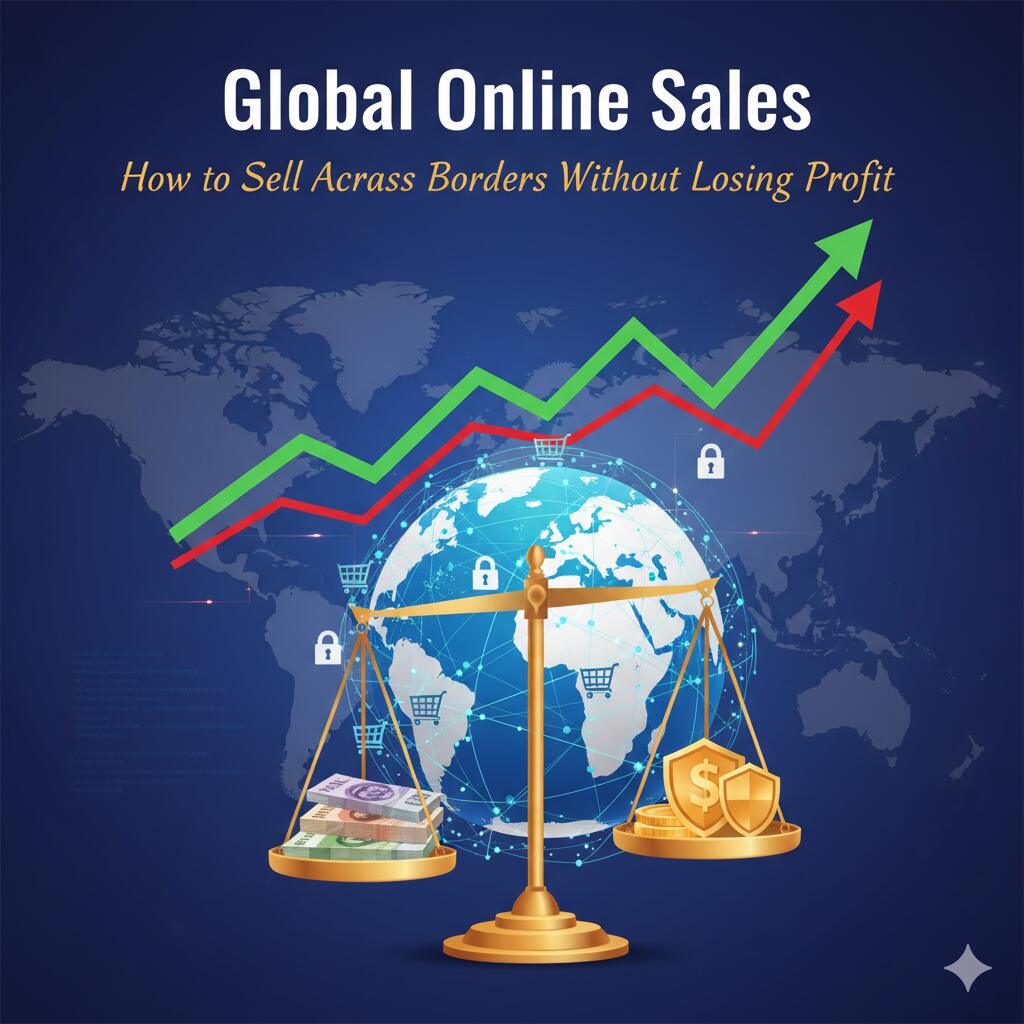Expanding your business globally is no longer a luxury—it’s a necessity. With e-commerce platforms and digital tools making international sales easier than ever, Global Online Sales can unlock massive growth. But here’s the catch: if you don’t plan wisely, you could lose more profit than you gain.
In this guide, we’ll explore how to sell globally online without falling into common traps. From understanding international regulations to optimising logistics, we cover everything you need to know to maximise profits while reaching customers worldwide.
Why Global Online Sales Matter
The global e-commerce market is projected to surpass $6 trillion by 2026. That presents a significant opportunity for businesses of all sizes. Whether you’re a solo entrepreneur or a growing brand, tapping into international markets can:
- Diversify your revenue streams
- Reduce dependence on local economic conditions
- Increase brand visibility
- Reach niche audiences that are underserved locally
But with opportunity comes complexity. Cross-border selling involves more than just translating your website—it requires strategic planning and consideration.
Challenges of Selling Across Borders
Before diving into solutions, let’s look at the common hurdles:
1. Currency Fluctuations
Exchange rates can eat into your margins. If you’re not careful, you might sell a product at a profit today and lose money tomorrow.
2. Shipping Costs
International shipping is expensive. Add customs duties, taxes and delays, and you’ve got a recipe for unhappy customers and shrinking profits.
3. Legal and Tax Compliance
Each country has its own rules for imports, taxes and consumer protection. Failing to comply with these can result in fines or even bans.
4. Payment Gateways
Not all payment processors work globally. Offering localised payment options can help you avoid cart abandonment.
5. Cultural Differences
What sells in one country might flop in another. Language, imagery and even product sizing can vary widely.
How to Sell Globally Without Losing Profit
Let’s break down the key strategies to make international e-commerce profitable.
1. Choose the Right Markets
Start small—Utilise analytics to determine the source of your traffic. Tools like Google Analytics, Shopify Insights or Amazon Seller Central can help you spot trends.
Focus on countries with:
- High demand for your product
- Favourable trade agreements
- Reliable logistics infrastructure
- Lower barriers to entry
2. Localise Your Store
Localisation goes beyond translation. It includes:
- Currency conversion
- Local payment methods (e.g., Alipay in China, Paytm in India)
- Local sizing charts
- Culturally relevant images and messaging
Use tools like Weglot, Langify or Shopify Markets to streamline this process.
3. Optimise International Shipping
Shipping is often the most significant cost in cross-border e-commerce. Here’s how to reduce it:
- Partner with global carriers like DHL, FedEx or UPS
- Use fulfilment centres in target regions (e.g. Amazon FBA, ShipBob)
- Offer flat-rate or free shipping with a minimum purchase
- Use packaging that meets international standards to avoid customs issues
4. Understand Duties and Taxes
Utilise tools like Zonos, SimplyDuty or Avalara to calculate import duties and taxes accurately. Be transparent with customers—hidden fees lead to abandoned carts.
Consider Delivered Duty Paid (DDP) shipping, where you cover the duties upfront. It simplifies the buying experience and builds trust.
5. Use Multi-Currency Pricing
Enable multi-currency pricing on your store. Platforms like Shopify, WooCommerce and BigCommerce support this feature.
Set prices based on:
- Local purchasing power
- Competitor pricing
- Exchange rate trends
This helps maintain profit margins while staying competitive.
6. Offer Local Payment Options
Global customers expect familiar payment methods. Integrate:
- Credit/debit cards
- Digital wallets (Apple Pay, Google Pay)
- Country-specific gateways (e.g. Klarna, iDEAL, MercadoPago)
Use Stripe, PayPal or Adyen for broad coverage.
7. Automate Tax Compliance
Tax laws vary by country. Automate compliance using:
- TaxJar
- Avalara
- Quaderno
These tools help you collect, report and remit taxes accurately and efficiently.
8. Leverage Global Marketplaces
Selling on platforms like Amazon, eBay, Etsy or AliExpress gives you instant access to international audiences.
Benefits include:
- Built-in trust
- Local fulfilment options
- Simplified payment and tax handling
Be mindful of platform fees and potential competition.
9. Monitor Profitability
Use analytics to track:
- Conversion rates by country
- Shipping costs vs. revenue
- Refund and return rates
- Customer lifetime value
Tools like Google Data Studio, Shopify Reports or Klaviyo can help you visualise performance.
Real-World Example: How a Small Brand Went Global
Take the example of a small skincare brand based in Canada. They began selling in the U.S. and then expanded to Europe and Asia. By using Shopify Markets, DHL Express and localised ads, they:
- Increased revenue by 300% in 12 months
- Reduced shipping costs by 40%
- Improved customer satisfaction with transparent pricing
Their secret? They didn’t rush. They tested each market, optimisedoptimised logistics and prioritised customer experience.
FAQ: Selling Across Borders
Q1: What’s the best platform for global online sales?
A: Shopify, WooCommerce and BigCommerce are great for building your own store. Amazon and eBay are ideal for marketplace selling.
Q2: How do I handle returns internationally?
A: Offer local return addresses via fulfilment partners or use services like Happy Returns. Be clear about your return policy.
Q3: Do I need a business license in every country where I sell?
A: Not always. It depends on local laws. Consult a legal expert or use compliance tools like Avalara.
Q4: How can I avoid currency loss?
A: Use multi-currency pricing and hedge against exchange rate fluctuations with tools like Wise or OFX.
Q5: What’s the easiest way to calculate duties and taxes?
A: Use automated tools like Zonos or SimplyDuty to estimate costs and display them at checkout.
Final Thoughts
Global Online Sales is exciting—but it comes with risk. The key to success in cross-border e-commerce is thorough preparation. By understanding the challenges and using the right tools, you can expand your reach without sacrificing profit.
Start with one market, test your strategy and scale from there. The world is waiting—make sure you’re ready to meet it.

